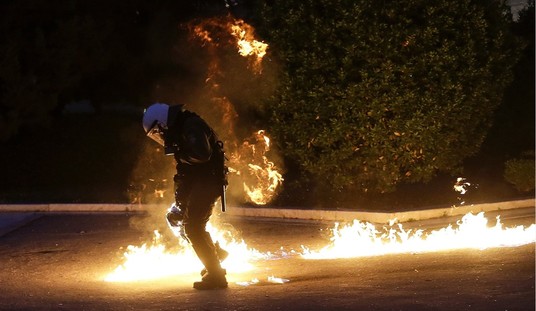The New York Times says that the administration has decided to build missile defense systems to defend against possible nuclear missile attacks from North Korea.
WASHINGTON — The Pentagon will spend $1 billion to deploy additional ballistic missile interceptors along the Pacific Coast to counter the growing reach of North Korea’s weapons, a decision accelerated by Pyongyang’s recent belligerence and indications that Kim Jong-un, the North Korean leader, is resisting China’s efforts to restrain him.
It’ll take two years to get the defense sites up, though. The administration was apparently relying on China to defend it; to ‘handle’ North Korea. Now that this has failed it is building a “bullet to hit a bullet”: missile defense.
“There’s been a quickening pace of provocations,” said one senior administration official, describing actions and words from North Korea and its new leader, Mr. Kim. “But the real accelerant was the fact that the North Koreans seemed more unmoored from their Chinese handlers than even we had feared.”
Too bad the North Korea’s handlers let Obama down. The more basic question is: why didn’t this strategy work?
Maybe they couldn’t pay the handler’s rate. Prices have gone up in China lately. Or maybe there was something else. At any rate the missile defense sites won’t be built just yet. The DOD says they are still conducting environmental impact studies before deciding when and where to proceed.
Hagel said DOD is also conducting environmental impact studies for a potential additional interceptor site in the United States. Officials are looking for two sites on the East Coast and one on the West. While the administration has not made a decision on whether to proceed, conducting environmental impact studies will shorten the timeline of construction should a decision be made, he explained. Hagel also announced plans to restructure the SM3-2B program, a land-based standard missile, with plans to deploy it as part of the European phase-adapted approach. “The purpose was to add protection of the U.S. homeland already provided by our current GBIs [ground based interceptors] against missile threats in the Middle East,” Hagel said.
The questions mount.
Considering the Middle East, Max Boot wonders why the administration is hunting al-Qaeda in Iraq. Wasn’t the public told there was no al-Qaeda in the region? That only poor old deluded George Bush could think that? That they were really in Afghanistan, which is where the administration has put the ground forces? ‘To end 9/11 where it began?’ Boot writes that the administration is acting like al-Qaeda was back where it wasn’t.
The CIA has stepped up its assistance to the Iraqi Counterterrorism Service which includes Iraqi Special Operations units that were trained and mentored in the past by U.S. Special Operations forces? Iraqi forces are now working with American clandestine operatives to target al-Qaeda in Iraq and its Syrian offshoot, the al-Nusra Front.
On one level this is an implicit acknowledgement from President Obama that his decision to pull all U.S. troops out of Iraq at the end of 2011 was a mistake: Contrary to his overoptimistic claims, Iraq was not, and still is not, ready to take over its entire defense. There has been a corresponding degradation of Iraq’s capacity to fight groups such as al-Qaeda in Iraq, which helps to account for their resurgence in the past year and now their spread to Syria.
Obama claimed that the pullout was necessary because Iraqi political leaders, led by Prime Minister Nouri al-Maliki, would not countenance an American role with immunity from prosecution. Does that mean that these CIA operatives are now subject to Iraqi criminal prosecution? One doubts it. Rather, one suspects that the Iraqis have granted the CIA a secret immunity deal, although if one exists it goes unmentioned in the Journal article.
And not just there, but in Mali — and in the subSahara — and in Syria, apart from Iraq. A long way from Afghanistan. A lot plane tickets from ‘where 9/11 began’. Speaking of which the UN is wondering why, if al-Qaeda is Afghanistan, the administration keeps striking Pakistan. The Washington Post says a UN official has concluded that the administration is conducting unilateral warfare in Pakistan.
Ben Emmerson, the United Nations’ special rapporteur on human rights and counter-terrorism, met with Pakistani government officials for three days and came away supporting their long-stated view that they do not consent to the remote-fired missile campaign that is the centerpiece of U.S. strategy to eliminate a wide range of Islamic militants.
This contradicts Washington’s position that the Pakistani military and intelligence services have at least tacitly supported the strikes, which began in 2004 and have significantly escalated since President Obama took office. At one point earlier in the campaign, the two nations shared intelligence on militant targets, but Pakistani officials vehemently deny that they are still doing so.
Osama bin Laden was the object of one such strike. Bin Laden was killed by SEALs in a safe-house half a mile from the Pakistani military academy. Strange that he should be there.
Here’s a thought: al-Qaeda is in Pakistan, or in the Middle East, funded from the oil-rich Middle East. It is only in Afghanistan to the extent required to fool Obama into sending the army there. Crazy idea, eh?
Glad the administration knows better. But what if the administration’s foreign policy which does not explicitly recognize the existence of an “Axis of Evil” or an international arrangement between rogue states to wage low-intensity warfare against the United States were hypothetically wrong?
Suppose Pakistan, Iran, North Korea, and the Middle East were not separable problems, but working in concert, diplomatically supported by China and Russia to wear down the United States? Then it would be a global problem requiring — gasp — a global strategy.
Now America has had a global strategy before. In World War 2. During the Cold War. But there’s no need for that now. All we need is law enforcement and diplomacy. But …
Pakistan, Iran and North Korea might each be developing components of a nuclear weapons and delivery platform under the diplomatic protection of Russia and China. And suppose terrorism were not simply the product of mutant sects in Islam, but of a concerted effort by secret services, like the ISI, to send proxy enemies against the West?
Such a condition would imply the necessity of a crash program of energy independence to deny the Muslim oil producers their monetary leverage. That situation would call for active ideological warfare against radical Islam and it’s 5th Column: the radical maddrassas.
But the adminstration’s security policies evince no such world view; and in place of any discernible comprehensive strategy the administration offers a patchwork cocktail consisting of “leading from behind”, windmills, auto scrappage, electric cars powered from oil-fired power plants, encouragement for the ‘Arab Spring’, outreach to Islam, pinprick drone attacks on countries which are nuclear armed! without even the benefit of Congressional authorization. It has pursued an unremitting program of defense cuts and it is now belatedly reviving a missile defense system to defend itself against one of the poorest nations on the face of earth.
However it never answers the question: who is behind the Nokor Nukes and what part does it play in a larger game? But that’s a tinfoil hat question. Everyone knows there is no larger context in which the administration’s should exercise its genius. “Smart adhocracy” — the hearty laugh and round of dance with Ellen de Generes or Oprah Winfrey — will be enough.
The drone program has been criticized by both conservatives and leftists as a human-rights abomination. But it may be worse than that. It might be evidence of policy dementia; an example of prescribing painkillers in place of medicine; of applying Band Aid where surgery is indicated; it could be the triumph of shallow expedience in place of a cohesive plan. Perhaps nothing so clearly depicts the workings of the administration’s policy so much as its drawerful of odds and ends.
The Three Conjectures at Amazon Kindle for $1.99
Storming the Castle at Amazon Kindle for $3.99
No Way In at Amazon Kindle $8.95, print $9.99










Join the conversation as a VIP Member